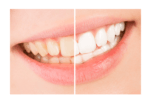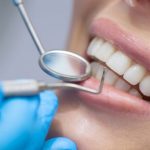Natural Teeth Whitening: Say Goodbye to Coffee Stains with These Simple Methods
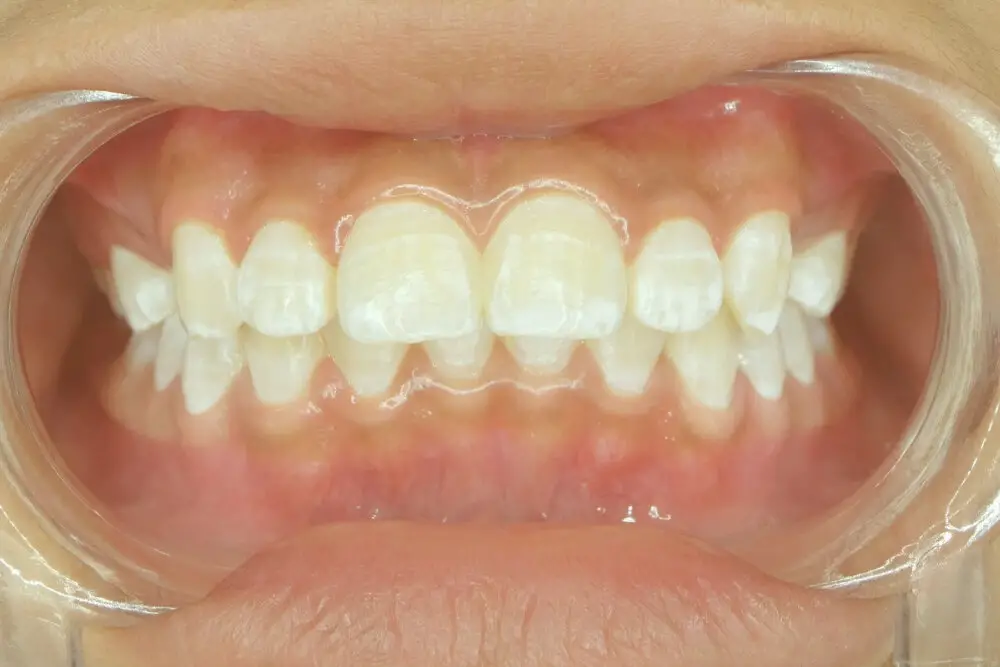
H1: Natural Teeth Whitening: Say Goodbye to Coffee Stains with These Simple MethodsA bright and confident smile is an essential part of our appearance. However, over time, our teeth can become stained and discolored due to various factors such as aging, poor oral hygiene, and consuming teeth-staining foods and drinks like coffee, tea, and wine. While there are various teeth whitening products and treatments available in the market, they can be expensive, harsh on teeth, and may not deliver the desired results. Fortunately, there are several natural teeth whitening methods that are safe, effective, and affordable. In this article, we will explore some simple and easy-to-follow natural methods that can help you say goodbye to coffee stains and achieve a brighter, whiter smile. Coffee is a popular morning beverage that helps many people jumpstart their day. However, it is also notorious for staining teeth, leaving yellowish-brown marks on enamel that can be difficult to remove. While quitting coffee may not be an option for many, there are several natural ways to combat coffee stains and restore the natural brightness of your teeth. From brushing with baking soda to oil pulling and eating crunchy fruits and vegetables, there are several simple and effective natural methods that can help you achieve a brighter, whiter smile without damaging your enamel or breaking the bank. Read on to discover some of the best natural teeth whitening methods for coffee lovers.
Teeth staining is a common dental issue that occurs due to various reasons such as regular consumption of coffee, tea, red wine, and tobacco products. These substances contain chromogens, tannins, and acids that stick to the enamel and cause discoloration. Moreover, poor oral hygiene, aging, certain medications, and genetics can also contribute to teeth staining. The chromogens in these substances bind to the enamel, which is the outer layer of the tooth, and cause the yellow or brownish stains. However, with the advancement of technology and the availability of various teeth whitening methods, one can easily remove these stains and restore the natural color of their teeth.
Natural teeth whitening methods are becoming increasingly popular as people look for safer and more affordable alternatives to professional treatments. These methods usually involve the use of ingredients that are easily accessible and commonly found in most households, such as baking soda, hydrogen peroxide, and activated charcoal. Baking soda is known for its ability to remove surface stains and polish teeth, while hydrogen peroxide can penetrate deeper into the enamel to break down stubborn stains. Activated charcoal, on the other hand, is a porous substance that can absorb toxins and leave teeth looking brighter. Other natural teeth whitening methods include oil pulling, using fruit peels, and consuming certain foods that promote oral health. While these methods may not produce instant results, they are generally considered safe and effective in the long run.
Oil Pulling
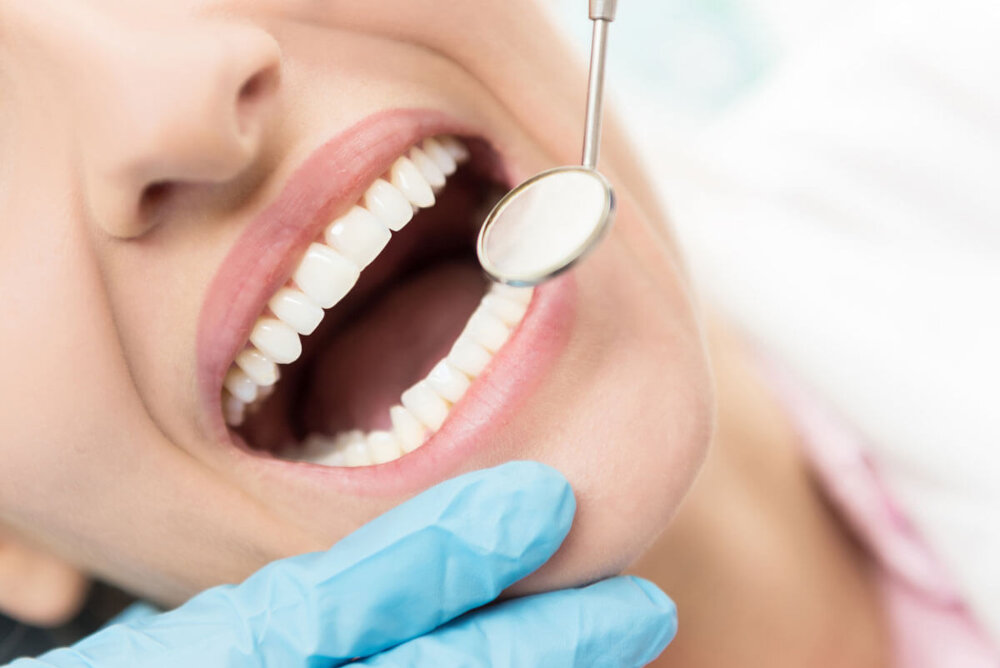
Oil pulling is a traditional Ayurvedic technique that involves swishing oil in the mouth for about 20 minutes to improve oral health. This practice has gained popularity in recent years as a natural way to whiten teeth, remove bacteria, and freshen breath. The most commonly used oils for oil pulling are coconut oil, sesame oil, and sunflower oil. Coconut oil is particularly popular thanks to its antimicrobial properties and pleasant taste. To practice oil pulling, simply take a tablespoon of your chosen oil and swish it around in your mouth for 20 minutes before spitting it out. It’s important not to swallow the oil, as it can contain harmful bacteria and toxins. Oil pulling can be done daily, preferably in the morning before brushing your teeth. Some people find that adding a drop or two of essential oil, such as peppermint or tea tree oil, can enhance the flavor and benefits of oil pulling. While there is limited scientific evidence to support the claims of oil pulling, many people swear by this ancient technique for improving their oral health and achieving a brighter, whiter smile.
Oil pulling is an ancient Ayurvedic practice that involves swishing oil, typically coconut or sesame, in the mouth for 10-20 minutes. The idea behind oil pulling is that the oil will pull toxins and bacteria from the mouth, leading to better oral health and a brighter smile. The oil acts as a natural cleanser, removing plaque and bacteria from the teeth and gums. As the oil is swished around the mouth, it attracts and binds to the toxins, which are then discarded when the oil is spit out. Additionally, the oil helps to lubricate the gums and prevent dry mouth, which can lead to bad breath and cavities. While the scientific evidence behind oil pulling is limited, many people swear by this practice as a natural way to whiten teeth and improve oral health.
Oil pulling is a traditional Indian practice that involves swishing oil in your mouth for 20 minutes and spitting it out. It is believed to improve oral health, including whitening teeth. To do oil pulling, choose an oil such as coconut, sesame, or sunflower. Take 1-2 tablespoons of oil and swish it around in your mouth for 20 minutes, making sure to move it around all areas of your mouth. After 20 minutes, spit the oil out and rinse your mouth with water. It is recommended to do oil pulling first thing in the morning on an empty stomach for best results. With regular practice, oil pulling can provide a natural and effective way to whiten teeth and improve overall oral health.
Oil pulling is an ancient Ayurvedic practice that involves swishing oil in the mouth for around 20 minutes to improve oral health. One of the major benefits of oil pulling is that it helps to remove harmful bacteria and toxins from the mouth, reducing the risk of gum disease and bad breath. Additionally, oil pulling has been shown to help whiten teeth naturally by removing surface stains and reducing plaque buildup. The practice also stimulates saliva production, which can help to neutralize harmful acids in the mouth and promote healthy gums. Overall, oil pulling is a simple and effective way to improve oral health and achieve a brighter, healthier smile.
Baking Soda

Baking soda, also known as sodium bicarbonate, is a versatile and inexpensive household product that is commonly used for cleaning, cooking, and even teeth whitening. Its mild abrasive properties make it an effective natural teeth whitener, as it can remove surface stains caused by coffee, tea, and other dark-colored beverages. Baking soda works by neutralizing the acids in your mouth and creating an alkaline environment that helps to break down and remove the stains on your teeth. Simply mix one teaspoon of baking soda with a few drops of water to create a paste, and brush your teeth with it for 2-3 minutes every other day. However, it is important to note that excessive use of baking soda can cause enamel erosion, so it is recommended to use it in moderation. In addition to its teeth whitening properties, baking soda is also known for its ability to freshen breath and promote oral health. It can help to neutralize odors caused by bacteria in the mouth, and its alkaline properties can help to balance the pH levels in your mouth, which can prevent the growth of harmful bacteria. Baking soda can also help to prevent gum disease and cavities by reducing the amount of plaque and bacteria in the mouth. To use baking soda as a mouthwash, simply mix one teaspoon with a cup of water and swish it around in your mouth for 30-60 seconds. This natural and inexpensive method is a great way to maintain oral health and keep your teeth looking bright and healthy.
Baking soda is a widely used natural teeth whitening agent because of its ability to remove surface stains and discoloration. Its chemical name is sodium bicarbonate, and it is mildly abrasive, which helps to scrub away stains on the enamel of the teeth. Baking soda also neutralizes the acids in the mouth that can cause tooth decay and bad breath. When mixed with water, baking soda forms a paste that is applied to the teeth and left on for a few minutes before being rinsed off. However, it is important to note that excessive use of baking soda can damage the enamel, so it should be used in moderation and in conjunction with regular brushing and dental cleanings.
Baking soda has long been a popular choice for teeth whitening due to its natural bleaching properties. To use baking soda for teeth whitening, simply mix a small amount of baking soda with water until it forms a paste. Apply the paste to your teeth using a toothbrush or your finger, and let it sit for 2-3 minutes. Then, rinse your mouth thoroughly with water. Be careful not to use too much baking soda, as it can be abrasive and damage your enamel. It’s also important to note that while baking soda can help remove surface stains, it may not be effective for deeper stains or discoloration caused by factors such as genetics or medication.
While baking soda is known for its teeth whitening properties, it is important to note that it can also have potential risks and side effects. One of the main concerns is that baking soda is abrasive and can damage tooth enamel, leading to tooth sensitivity and even cavities over time. Additionally, baking soda should not be used too frequently, as it can cause gum irritation and inflammation. It is also important to avoid ingesting large amounts of baking soda, as it can lead to stomach upset and electrolyte imbalances. Therefore, it is recommended to use baking soda in moderation and under the guidance of a dental professional to minimize any potential risks and side effects.
Apple Cider Vinegar

Apple cider vinegar is a natural substance that has been used for centuries for a variety of health benefits. It is made by fermenting apple cider, and contains acetic acid, which is responsible for its sour taste and many of its health benefits. In addition to being used as a natural teeth whitener, apple cider vinegar has been shown to help regulate blood sugar levels, improve digestion, boost immunity, and even promote weight loss. It is also a great natural cleaning agent, and can be used to clean and disinfect surfaces around the home. When it comes to teeth whitening, apple cider vinegar has become increasingly popular in recent years. It works by breaking down stains on the teeth and removing them, resulting in a brighter, whiter smile. To use apple cider vinegar for teeth whitening, simply dilute it with water and swish it around in your mouth for a few minutes before brushing your teeth as normal. It is important to note that apple cider vinegar is highly acidic, and overuse can lead to enamel erosion and damage to the teeth. It is best to use it in moderation and to always dilute it before use.
Apple cider vinegar has become a popular natural remedy for teeth whitening due to its acidic properties. The acetic acid in apple cider vinegar helps to remove surface stains on teeth caused by coffee, tea, and other dark-colored foods. It also helps to kill bacteria in the mouth that can lead to discoloration. When used as a mouthwash, apple cider vinegar can help to break down plaque and prevent further staining. However, it is important to use apple cider vinegar in moderation as excessive use can erode tooth enamel. Additionally, it is recommended to rinse your mouth thoroughly with water after using apple cider vinegar to neutralize the acidity.
Apple cider vinegar is a natural and cost-effective way to whiten your teeth. To use it, first dilute the vinegar in water to avoid damaging your tooth enamel. Mix one part vinegar with two parts water, then swish the solution around in your mouth for about a minute. After spitting it out, brush your teeth with toothpaste as usual. It’s important to note that while apple cider vinegar can help remove surface stains, it won’t change the natural color of your teeth. Additionally, overuse can erode your enamel, so limit use to once or twice a week. With consistent use, apple cider vinegar can be a great addition to your natural teeth whitening routine.
While apple cider vinegar can be an effective and natural teeth-whitening solution, it also poses potential risks and side effects. The high acidity of apple cider vinegar can erode tooth enamel over time, leading to increased tooth sensitivity and even tooth decay. Additionally, consuming undiluted apple cider vinegar can irritate the throat and esophagus, and may exacerbate existing gastrointestinal conditions. It is important to dilute apple cider vinegar with water and use it in moderation to minimize these risks and maximize its teeth-whitening benefits. As with any natural remedy, it is always best to consult with a healthcare professional before use.
Activated Charcoal
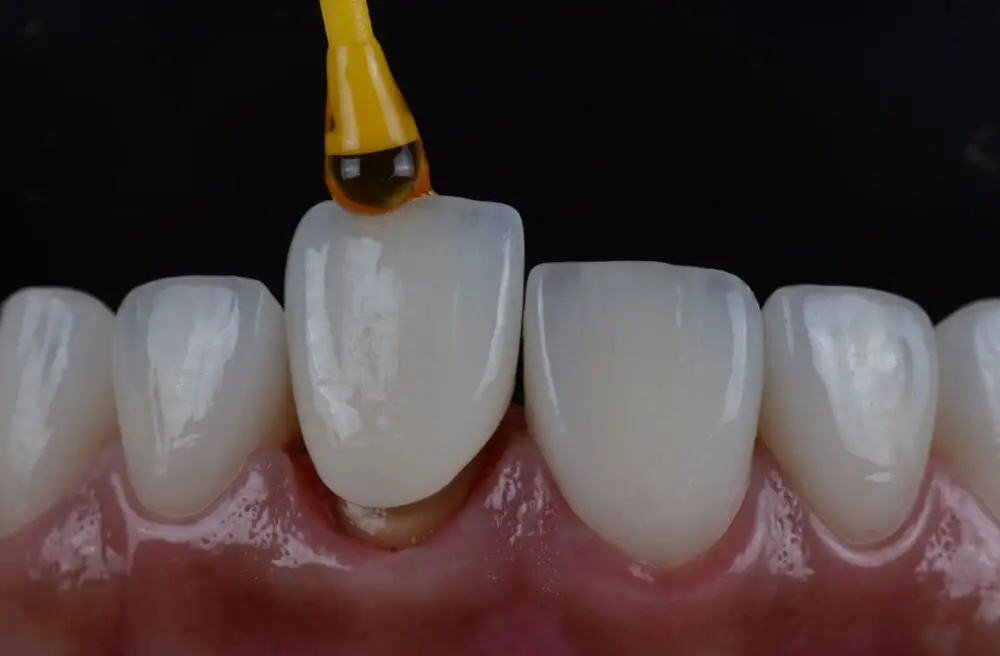
Activated charcoal has become a popular natural teeth whitening method due to its ability to absorb impurities and toxins from the surface of teeth. It is a fine black powder made from carbon-rich materials like coconut shells, peat, or sawdust that have been heated to high temperatures, creating a porous surface that can trap and eliminate bacteria and stains. Activated charcoal is a gentle and effective way to remove surface stains caused by coffee, tea, wine, or other dark-colored foods. It works by binding to the stains and lifting them away, leaving teeth looking brighter and healthier. However, it is important to note that activated charcoal should only be used occasionally, as excessive use can damage tooth enamel and cause sensitivity. To use activated charcoal for teeth whitening, simply wet a toothbrush and dip it into the powder. Brush gently for two minutes, then rinse thoroughly with water. It is best to do this once a week, as overuse can cause damage to the teeth. It is also important to be careful when using activated charcoal, as it can be messy and can stain clothing and surfaces. Despite these challenges, activated charcoal remains a popular and effective natural teeth whitening method that can help remove stains and improve overall oral health.
Activated charcoal is a popular natural method for teeth whitening. It works by binding to substances such as tannins, which are found in coffee, tea, and red wine, that stain teeth. The activated charcoal powder is applied to the teeth and left on for a few minutes before being rinsed off. As it is rinsed off, it takes the tannins and other impurities with it, leaving the teeth looking brighter and whiter. Activated charcoal is also known for its ability to balance the pH in the mouth, which can help to prevent cavities and bad breath. It is important to note that although activated charcoal can be effective for teeth whitening, it should be used in moderation, as excessive use can damage the enamel of the teeth.
Activated charcoal is a natural solution to teeth whitening and has become increasingly popular in recent years. To use activated charcoal for teeth whitening, you will need to purchase a high-quality activated charcoal powder. Wet your toothbrush and dip it into the powder, making sure to tap off any excess. Gently brush your teeth for 2-3 minutes, paying particular attention to any stained areas. Rinse your mouth thoroughly with water and spit until the water runs clear. Repeat this process 2-3 times a week for optimal results. Activated charcoal can be messy and may stain clothing, so be careful when using it. Additionally, it is important to note that while activated charcoal is effective at removing surface stains, it may not be as effective at removing deeper stains or discoloration caused by certain medications or dental procedures.
While activated charcoal is a popular natural teeth whitening method, it is important to be aware of potential risks and side effects. Activated charcoal can be abrasive and may damage tooth enamel if used too often or for extended periods of time. Additionally, it can absorb not only toxins but also medications and vitamins, so it should not be used regularly or in combination with other medications. Some people may also experience mild gastrointestinal distress or constipation when ingesting activated charcoal. As with any natural remedy, it is important to use activated charcoal in moderation and consult with a dentist or healthcare provider if you have any concerns or experience any adverse effects.
In \Natural Teeth Whitening: Say Goodbye to Coffee Stains with These Simple Methods,\ we discussed several natural teeth whitening methods. One of the methods is oil pulling, which involves swishing coconut oil or sesame oil in your mouth for 15-20 minutes. Another method is using baking soda and lemon juice to create a paste that can be applied to teeth for a few minutes before rinsing off. Additionally, we talked about the benefits of eating crunchy fruits and vegetables like apples and carrots, which can help scrub away surface stains. Finally, we suggested using activated charcoal powder mixed with water to create a paste that can be applied to teeth for a few minutes before rinsing off. These natural teeth whitening methods are a great alternative to harsh chemical treatments and can help you achieve a brighter, healthier smile.
When it comes to natural teeth whitening, there are a variety of methods to try based on individual needs and preferences. For those who are looking for a quick and easy solution, activated charcoal or baking soda can be a great option. However, these methods can be abrasive and may not be suitable for individuals with sensitive teeth. Oil pulling with coconut oil or using hydrogen peroxide can be a gentler alternative, but may require more time and consistency to see results. Additionally, incorporating more fruits and vegetables into your diet or using a whitening toothpaste can be a more gradual but sustainable approach. Ultimately, it is important to consider your own dental health and preferences when choosing a natural teeth whitening method.
Maintaining good oral hygiene habits is essential for achieving long-term teeth whitening results. While natural remedies can help remove surface stains, they won’t be effective if you don’t take care of your teeth daily. Brushing your teeth twice a day, flossing regularly, and using an antiseptic mouthwash can help prevent plaque buildup and keep your teeth healthy. Additionally, avoiding foods and beverages that can stain your teeth (such as coffee, tea, and red wine) or rinsing your mouth with water after consuming them can also help. By combining natural teeth whitening remedies with good oral hygiene habits, you can achieve a brighter, healthier smile that lasts.
Conclusion
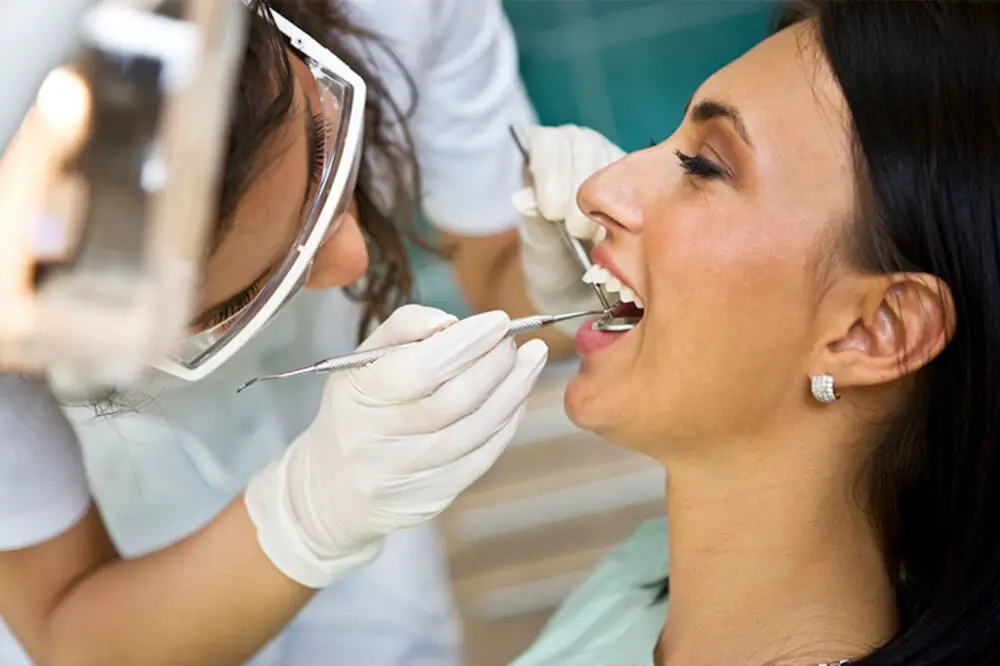
In conclusion, natural teeth whitening methods are a great alternative to chemical treatments and can effectively remove coffee stains and other discolorations from your teeth. From using baking soda and hydrogen peroxide to oil pulling and eating crunchy fruits and vegetables, these simple and accessible techniques can give you a brighter, healthier smile without breaking the bank or exposing yourself to harsh chemicals. So why not give them a try and say goodbye to coffee stains for good? Your teeth will thank you!

